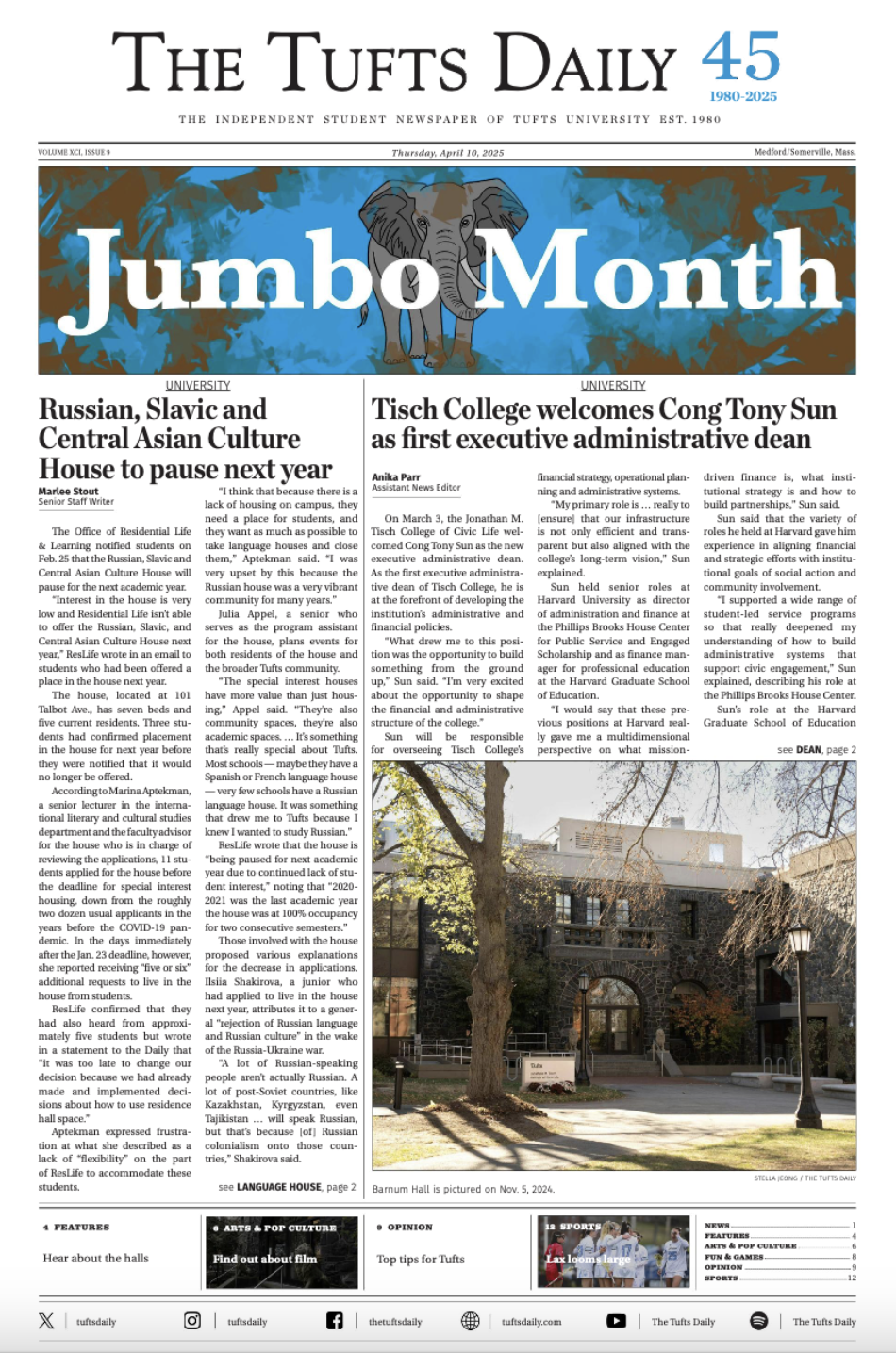In an admissions cycle characterized by a return to normalcy following the economic downturn, Tufts' Office of Undergraduate Admissions saw a strong yield.
Dean of Undergraduate Admissions Lee Coffin noted that this year saw the stabilization and normalization of the admission process after an uncharacteristic year.
"The macro trend was the restoration of normalcy to the admissions process," Coffin said. "[The Class of] 2013 was definitely framed by the economic recession, and families were concerned about their ability to pay as well as the stability of the university. This year, the worry was still there, but it was less acute."
The yield for the incoming Class of 2014 was nearly 37 percent, up from 33 percent last year, according to Coffin, who referred to it as a positive and healthy situation.
The strong yield came from an applicant pool that was the third largest in Tufts history, with 15,434 candidates for admission, marking a significant jump from the previous year.
"Last year, the applicant pool definitely shrunk," Coffin said. "The Class of 2013 had the smallest [applicant pool] in 10 years."
In another marked departure from last year when nearly 60 waitlisted students were admitted, the waitlist was not used this year, the third time this has happened in six years.
Corresponding to the increase in applicants, the acceptance rate declined to 24 percent from 26 percent in 2009, making it the most selective admissions cycle since 2001 and the second-lowest acceptance rate ever.
Coffin attributed the increase in applicants to the ongoing economic recovery as well as added efforts by the Office of Undergraduate Admissions.
"I think the increase resulted from a combination of the economy improving, enabling people to consider Tufts, and the work the admissions office did to increase the reputation of the university," Coffin said.
He explained that the admissions office this year sent representatives to Africa for the first time ever and also expanded recruitment on the West Coast, especially in California, which has seen massive cuts in its state university system.
"We were aware of the California system cutbacks and tried to increase our applicant pool from California to build a stronger pipeline to Tufts," Coffin said.
The result was a 10 percent increase in applicants from the West Coast, with 1,833 applicants compared to last year's 1,664. Tufts also accepted 25 percent more students from the West Coast than last year, taking in 148 students, up from 118.
In line with the improving economic situation, admissions officers were better able to admit students based on their suitability rather than considerations of the university's financial situation — although the process was not need-blind this year.
"We brought the decision-making back towards ‘Is this the right place for you?' rather than ‘Will this be stable for the university?'" Coffin said.
While the university has not officially moved to a need-blind admissions policy, the Classes of 2011 and 2012 were admitted without consideration of need. Approximately 95 percent of applications for the Class of 2013 were read need-blind with financial considerations, forcing the admissions office to become need-aware toward the end of the process.
"Our policy has always been need-sensitive, save the two years we were able to admit students on need-blind basis because our endowment allowed for it," Coffin said.
Seventy percent of applicants for the Class of 2014 applied for financial aid, and the number continues to rise yearly, according to Coffin. Of the admitted students, 36 percent will receive need-based grants. The university will spend a total of $14 million on aid for the incoming class.
Coffin is optimistic about the university's standing with regard to its financial situation.
"We are seeing the endowment climb back up due to the relatively healthy stock market in 2009-2010," he said. "This puts Tufts in a strong place, and incoming families see that the Tufts community is moving forward."
The admissions office's addition of a new video component to the optional section of this year's application drew considerable interest on the national stage. Coffin expects that the practice of giving applicants the opportunity to submit a short video will continue due to its success and enhancement of the process.
"The video option was designed to be another opportunity for a student narrative," he said. "The staff is pleased with the way students used video and saw it as another way of breaking the traffic jam of the incredible number of academically qualified students that apply to Tufts."
--
Amelie Hecht contributed reporting to this article.





